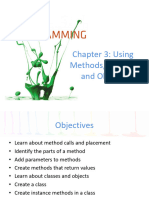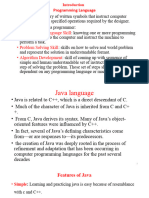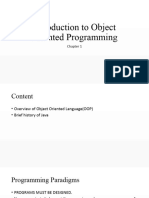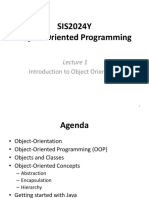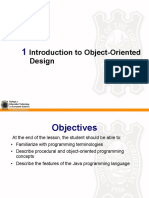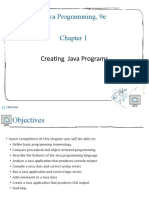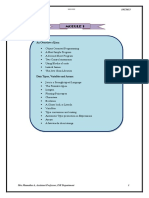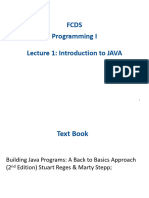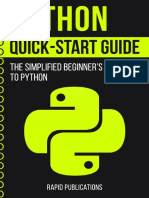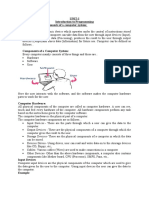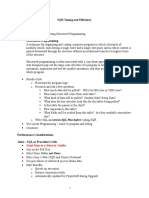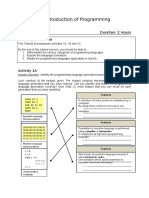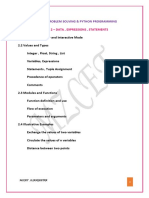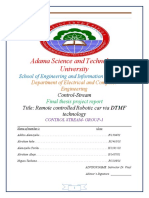0% found this document useful (0 votes)
87 views63 pagesChapter 1 Java Csc60a
This document provides an overview of key concepts for learning Java programming, including defining basic terminology like classes, objects, encapsulation, inheritance, and polymorphism. It compares procedural and object-oriented programming approaches. It also describes features of the Java language like security, portability across platforms via the Java Virtual Machine, and different types of Java programs like applets and applications. An example is provided of a simple Java application that produces output to the console.
Uploaded by
PRIVATECopyright
© © All Rights Reserved
We take content rights seriously. If you suspect this is your content, claim it here.
Available Formats
Download as PPT, PDF, TXT or read online on Scribd
0% found this document useful (0 votes)
87 views63 pagesChapter 1 Java Csc60a
This document provides an overview of key concepts for learning Java programming, including defining basic terminology like classes, objects, encapsulation, inheritance, and polymorphism. It compares procedural and object-oriented programming approaches. It also describes features of the Java language like security, portability across platforms via the Java Virtual Machine, and different types of Java programs like applets and applications. An example is provided of a simple Java application that produces output to the console.
Uploaded by
PRIVATECopyright
© © All Rights Reserved
We take content rights seriously. If you suspect this is your content, claim it here.
Available Formats
Download as PPT, PDF, TXT or read online on Scribd
/ 63



